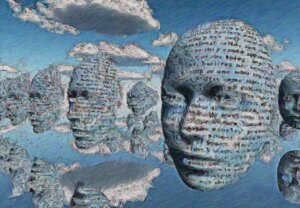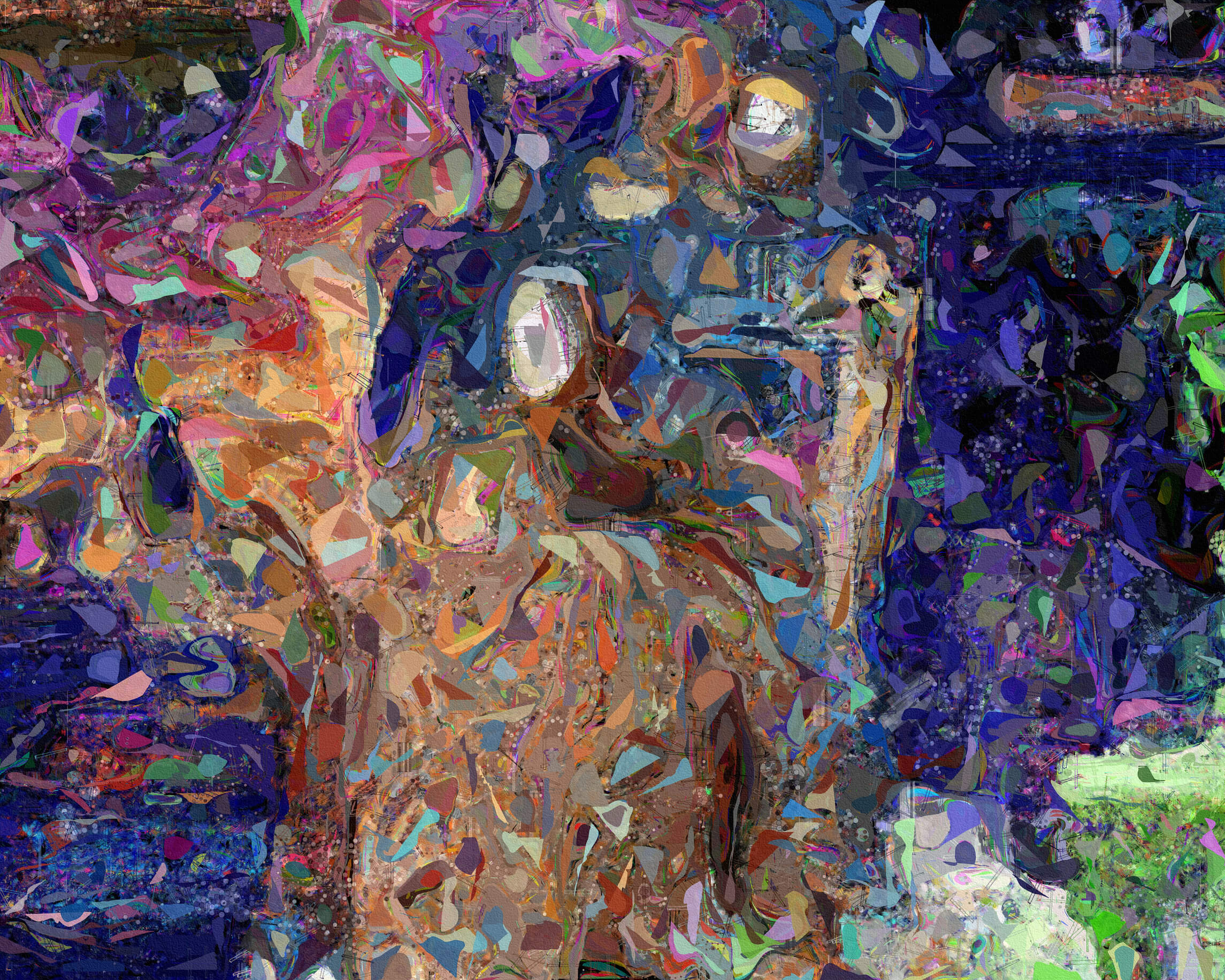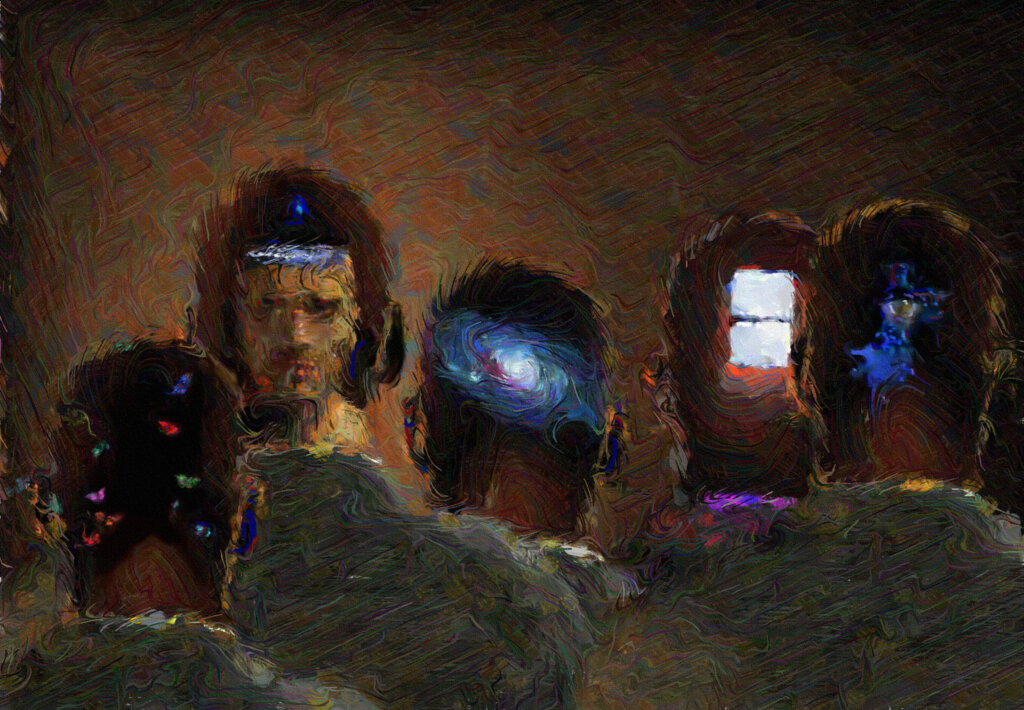Dadaism, The Art of the Absurd

The avant-gardes of the twentieth century represented a revolution on several levels. It was a time when the horizon opened up and the possibilities for artists grew. In this way, imagination and creativity gained ground in the face of rational and more academic thinking. One such current was Dadaism, the art of the absurd.
During the years in which this movement developed, other avant-gardes were also active. Movements like Cubism, Surrealism, Fauvism, and Futurism, etc. All of them had their own characteristics and a defined identity that broke with the classic parameters of the past. This opened new doors in the area of artistic creations.
The historical context of Dadaism

The origin of Dadaism can be found around 1916-1917. The German poet Hugo Ball was its founder. Later on, Tristan Tzara joined. He was another poet who promoted the ideas of what we know as anti-art or Dadaism. In fact, Dadaism became the reference point for many artists. Its manifesto was published in 1918.
From the second half of the 19th century and into the first third of the 20th, the rationalist theoretical approaches of positivism established general laws. However, Dadaism went against these principles and tried to show another artistic conception. They used humor, mockery, and provocation as basic and elementary concepts.
Dadaism was used in poetry, sculpture, and painting. Sometimes, different facets were mixed to achieve the same purpose: originality versus conventionality. At the end of the day, Dadaism was an attitude of rebellion that came about due to the tragedies of the First World War and the subsequent crisis situation. This started a magnificent interwar period in which things started to be valued that previously had no relevance.
“Every page must explode, either by profound heavy seriousness, the whirlwind, poetic frenzy, the new, the eternal, the crushing joke, enthusiasm for principles, or by the way in which it is printed.”
-Tristan Tzara-
Dadaist thinking
Dadaism burst onto the art scene with a sarcastic, striking, and singular approach. Let’s take a look at some of its qualities:
- Dadaism must be considered not only as an artistic genre but as a way of life. Artists who supported Dadaism rejected tradition and classical idealism, as well as the delimitation of doctrines and a unique approach to art.
- Dadaism is considered a manifesto against beauty, norms, and logical laws. Instead of everything being strictly defined, it allows freedom of thought under abstract principles. In fact, not everything has to be a universal law. This is because each individual is free to create what they wish in accordance with their own way of expressing themselves.
- Spontaneity, improvisation, and the absurd have their own particular place in museums. As a matter of fact, Dadaism goes so far as to question the principles of beauty and aestheticism. They suggest that anyone can conceive the beautiful in their own individual and different way.
- The Dadaism movement believes that anyone can become an artist. People simply need creative capacities that differ from the norm and to be able to explain the thought processes behind their creations.
Marcel Duchamp, Dadaist par excellence

If there’s one key figure in this movement, it would be Marcel Duchamp. He broke all established limits of art and made the viewers participate in his works. One of his most famous phrases is “The creative act is not performed by the artist alone; the spectator brings the work in contact with the external world by deciphering and interpreting its inner qualifications and thus adds his contribution to the creative act”.
His masterpiece, The Fountain (1917), is a sculpture of a public urinal signed by “R. Mutt”. It was submitted for an exhibition of the Society of Independent Artists of which Duchamp was a member. He wanted to generate uncertainty and also to know what the reactions of the other experts would be.
The work provoked both controversy and criticism. However, it also sparked the beginning of his ready-mades. The idea was, that to create art you not only have to be good with your hands, but you also create through your intellect.
In this sense, the borders of art were broken and a kind of openness began. Without a doubt, this was a groundbreaking moment in the history of art. Indeed, even today, The Fountain remains one of the most famous works of art of all time.
“Art has a beautiful habit of spoiling all artistic theories.”
-Marcel Duchamp-
What has Dadaism contributed to the history of art?
This question has a long answer. According to Gombrich, Dadaism became a means to open new paths that, deep down, were necessary. Other specialists such as Robert Frances also agree. At the same time, we can relate the Dadaist manifesto to the collective unconscious studied by psychologists such as Jung.
Therefore, what has Dadaism contributed to the history of art? As a matter of fact, it invited us to question many imperatives that were previously considered laws. Furthermore, it reminded us that freedom of thought exists. Finally, we can say, without a doubt, that the concept of the absurd most certainly warrants an important place within any museum.
The avant-gardes of the twentieth century represented a revolution on several levels. It was a time when the horizon opened up and the possibilities for artists grew. In this way, imagination and creativity gained ground in the face of rational and more academic thinking. One such current was Dadaism, the art of the absurd.
During the years in which this movement developed, other avant-gardes were also active. Movements like Cubism, Surrealism, Fauvism, and Futurism, etc. All of them had their own characteristics and a defined identity that broke with the classic parameters of the past. This opened new doors in the area of artistic creations.
The historical context of Dadaism

The origin of Dadaism can be found around 1916-1917. The German poet Hugo Ball was its founder. Later on, Tristan Tzara joined. He was another poet who promoted the ideas of what we know as anti-art or Dadaism. In fact, Dadaism became the reference point for many artists. Its manifesto was published in 1918.
From the second half of the 19th century and into the first third of the 20th, the rationalist theoretical approaches of positivism established general laws. However, Dadaism went against these principles and tried to show another artistic conception. They used humor, mockery, and provocation as basic and elementary concepts.
Dadaism was used in poetry, sculpture, and painting. Sometimes, different facets were mixed to achieve the same purpose: originality versus conventionality. At the end of the day, Dadaism was an attitude of rebellion that came about due to the tragedies of the First World War and the subsequent crisis situation. This started a magnificent interwar period in which things started to be valued that previously had no relevance.
“Every page must explode, either by profound heavy seriousness, the whirlwind, poetic frenzy, the new, the eternal, the crushing joke, enthusiasm for principles, or by the way in which it is printed.”
-Tristan Tzara-
Dadaist thinking
Dadaism burst onto the art scene with a sarcastic, striking, and singular approach. Let’s take a look at some of its qualities:
- Dadaism must be considered not only as an artistic genre but as a way of life. Artists who supported Dadaism rejected tradition and classical idealism, as well as the delimitation of doctrines and a unique approach to art.
- Dadaism is considered a manifesto against beauty, norms, and logical laws. Instead of everything being strictly defined, it allows freedom of thought under abstract principles. In fact, not everything has to be a universal law. This is because each individual is free to create what they wish in accordance with their own way of expressing themselves.
- Spontaneity, improvisation, and the absurd have their own particular place in museums. As a matter of fact, Dadaism goes so far as to question the principles of beauty and aestheticism. They suggest that anyone can conceive the beautiful in their own individual and different way.
- The Dadaism movement believes that anyone can become an artist. People simply need creative capacities that differ from the norm and to be able to explain the thought processes behind their creations.
Marcel Duchamp, Dadaist par excellence

If there’s one key figure in this movement, it would be Marcel Duchamp. He broke all established limits of art and made the viewers participate in his works. One of his most famous phrases is “The creative act is not performed by the artist alone; the spectator brings the work in contact with the external world by deciphering and interpreting its inner qualifications and thus adds his contribution to the creative act”.
His masterpiece, The Fountain (1917), is a sculpture of a public urinal signed by “R. Mutt”. It was submitted for an exhibition of the Society of Independent Artists of which Duchamp was a member. He wanted to generate uncertainty and also to know what the reactions of the other experts would be.
The work provoked both controversy and criticism. However, it also sparked the beginning of his ready-mades. The idea was, that to create art you not only have to be good with your hands, but you also create through your intellect.
In this sense, the borders of art were broken and a kind of openness began. Without a doubt, this was a groundbreaking moment in the history of art. Indeed, even today, The Fountain remains one of the most famous works of art of all time.
“Art has a beautiful habit of spoiling all artistic theories.”
-Marcel Duchamp-
What has Dadaism contributed to the history of art?
This question has a long answer. According to Gombrich, Dadaism became a means to open new paths that, deep down, were necessary. Other specialists such as Robert Frances also agree. At the same time, we can relate the Dadaist manifesto to the collective unconscious studied by psychologists such as Jung.
Therefore, what has Dadaism contributed to the history of art? As a matter of fact, it invited us to question many imperatives that were previously considered laws. Furthermore, it reminded us that freedom of thought exists. Finally, we can say, without a doubt, that the concept of the absurd most certainly warrants an important place within any museum.
All cited sources were thoroughly reviewed by our team to ensure their quality, reliability, currency, and validity. The bibliography of this article was considered reliable and of academic or scientific accuracy.
- Frances, R. (2005). Psicología del arte y la estética. Akal. Madrid.
- García Martínez, J. A. (1977). Movimientos artísticos del siglo XX: futurismo, dadaísmo y surrealismo. Centro Editor de América Latina.
- Gombrich, E. H. (2016). La historia del arte. Phaidon. Nueva York.
This text is provided for informational purposes only and does not replace consultation with a professional. If in doubt, consult your specialist.







